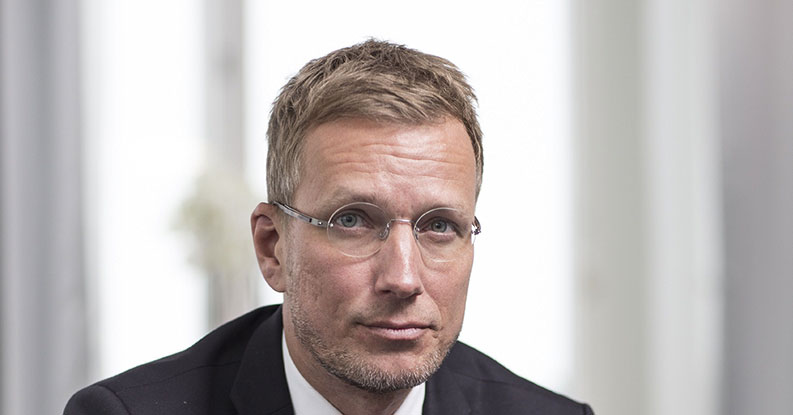A portfolio manager with more than 20 years’ experience of managing Swedish fixed income, it is probably not a bold statement to say he’s one of the most competent people in his field. At the same time, Stefan is a firm believer in ESG integration even though – as he put it himself: “I’m still a rookie”.
Being a rookie is probably not doing justice to the word. Stefan admits that he is a manager who has espoused this philosophy for a long time, having “imbibed it with his mother’s milk”, as he likes to say. That said, words like “humility”, “early days”, and “rookie” came up time and again over the course of the discussion.
In this context, then, how does he view Danske Bank’s decision not to adopt a top-down ESG approach as a uniform house view?
“I would put it this way: I subscribe to this approach and the decision one hundred per cent. At the same time, there is a cultural aspect to be taken into account. It is very difficult in our industry to admit to your weaknesses. After all, you are offered a contract because you are one of the best in the market. So, when you are asked to move into a new territory, there is a natural desire among many to have someone come in, show the way, and say: this is how it should be. There are many players in the industry who act in precisely this way: you receive directives from above that define what should be done when it comes to ESG. Then all you do is to follow the directives and keep doing what you did before – nice and comfortable.”

What is the problem with a working method like that in your view?
“The biggest problem is exclusion, i.e. reducing ESG to a question of the size of your investment universe. It is not particularly hard for any ESG analyst to look at a universe, point to the 20% most controversial companies from an ESG point of view, ask the portfolio manager to remove them, and just say that he or she can continue to work just as before. However, having a well-functioning view of how my team and I should address ESG integration is a completely different ballgame.”
Could you expand on that?
“Take screening, for example. In and of itself, screening is an incredibly important tool. It helps us to keep track of a lot of things in our portfolio in terms of ESG. I just think there is this misconception about screening that is also automatically implies exclusion. Again: screening is a way to better understand your holdings, whereas exclusion is a decision not to invest. And it’s precisely here that the house view becomes an interesting point. Exclusion has always and will always be part of my work as a portfolio manager. I exclude a lot of companies all the time in so much as I refuse to invest in them, more often than not because of financial factors or pure valuation considerations. Once again, though: excluding a company solely on the basis of its ESG performance is not as difficult and it’s something that a lot of people can do; but choosing not to invest in a company based on an overall assessment, of which ESG is one consideration, requires an in-depth understanding of all material aspects of the company. Although, in some situations, it’d be convenient, following an ESG screening, to accept top-down directives advising us against investing in specific companies, I believe that the final decision should ultimately rest with those of us who are responsible for the investment side of the portfolio.” So, responsibility for ESG integration rests with you yourself.
To conclude, how do you look at incentives and KPIs in this context?
“I’ve given this considerable thought and I’d say that I’d become incentivised when I feel a push from clients and client managers. There is a great demand on me as a manager to integrate ESG aspects into my portfolio. I do not allow myself to be guided by formal KPIs, and the fact that our clients ask for such activities is a sufficient incentive for me. I firmly believe that our clients ask us to do this because they believe that, by doing so, we’ll better be able to generate strong returns in the long run – and that’s a view that I wholeheartedly share myself.”
Disclaimer: Danske Bank has prepared this material for information purposes only, and it does not constitute investment advice. Always speak to an advisor if you are considering making an investment based on this material to establish whether a particular investment suits your investment profile, including your risk appetite, investment horizon and ability to absorb a loss.

